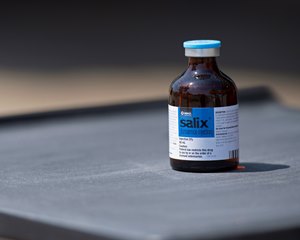New York Regulator Considers Lasix Ban or Restrictions


New York regulators are exploring ideas to possibly ban or restrict race-day use of Lasix at all Thoroughbred and Standardbred tracks in the state.
Members of the New York State Gaming Commission April 29 asked agency staff to survey industry stakeholders on the looming issuance of regulations restricting the use of furosemide, known popularly as Lasix, at New York racetracks.
The move comes after 20 tracks across the United States, including those owned or operated by Churchill Downs Inc., the New York Racing Association, and The Stronach Group, agreed to phase out the use of Lasix in juvenile racing in 2020, followed by a ban of the drug's use in listed and graded stakes races in 2021.
John Crotty, a gaming commission member, told his colleagues Monday that "as a body it would be very important for us to act" on Lasix regulations. He said it's "great" that some in the racing industry want to self-regulate the drug's use, but that New York regulators "should not divest that authority to them.''
Noting the only racetracks from New York participating in the recent Lasix restriction announcement April 18 are the three run by NYRA, other Gaming Commission members then noted that any Lasix-related regulations the state might consider should address all tracks in New York—including Delaware North's Finger Lakes Racetrack as well as the harness tracks scattered across upstate and downstate.
Crotty suggested the board should move swiftly on the matter, and the agency's executive director, Robert Williams, said staff members would immediately start to survey all the various stakeholders with an interest in the issue. Regulators said they will more fully discuss the ideas generated by the stakeholder discussions at the next gaming commission board meeting, which will be in about four weeks.
Crotty previously pressed the gaming commission board to act on Lasix, saying in 2017 that the state's racing industry was "breeding bleeders.''
Dr. Scott Palmer, the state's equine medical director, told the commission's members Monday that it will be important to get input from veterinarians. He said there is "a lot of misconception about this drug.''
"The medical conditions and medical concerns have not been taken into consideration by the coalition of racetracks, and I think it's just something that should be heard from,'' he told the board Monday.
Besides tracks run or operated by CDI, NYRA, and Stronach, the coalition recently agreeing to the Lasix initiative include Del Mar, Keeneland, Lone Star Park, Remington Park, Oaklawn Park, and Tampa Bay Downs.
The tracks said the drug will not be permitted for use within 24 hours of a race for 2-year-olds beginning Jan. 1, 2020. All stakes races run by the tracks would not allow Lasix, furosemide, beginning in 2021. The New York regulators were not specific during their board meeting about precisely how and when Lasix might be restricted at the regulatory level.
The board also heard an update from Williams about changes made by The Stronach Group after a high number of equine deaths at Santa Anita Park, which totaled 23 horses in a three-month stretch this year. The company last month announced restrictions on Lasix at Santa Anita and Golden Gate Fields, along with other major changes, including new transparency measures pertaining to all veterinarian records, increasing out-of-competition drug testing, limits on shockwave therapy and use of riding crops, and mandatory transfer of equine records to a horse's new owner.
Williams said New York State already either has many similar rules on the books pertaining to racetracks, or is actively studying the issue, such as use of riding crops.
The gaming commission Monday also gave final approval to rules previously proposed to:
- Clarify the use of ultrasonic, diathermy, or other electro/medical equipment treatments so that they can be given up to 24 hours before a scheduled post time for a horse's race instead of the current 24 hours prior to the start of a track's racing program for the day.
- Expand the required use of safety helmets at racetracks to include starting gate crews and increase the maximum weight of safety vests from two to four pounds "to permit newer vest models that provide enhanced safety."
- Amend a minimum penalty system, which includes set penalties for repeat drug violation offenders, to conform with changes made to a national model by the Association of Racing Commissioners International.
